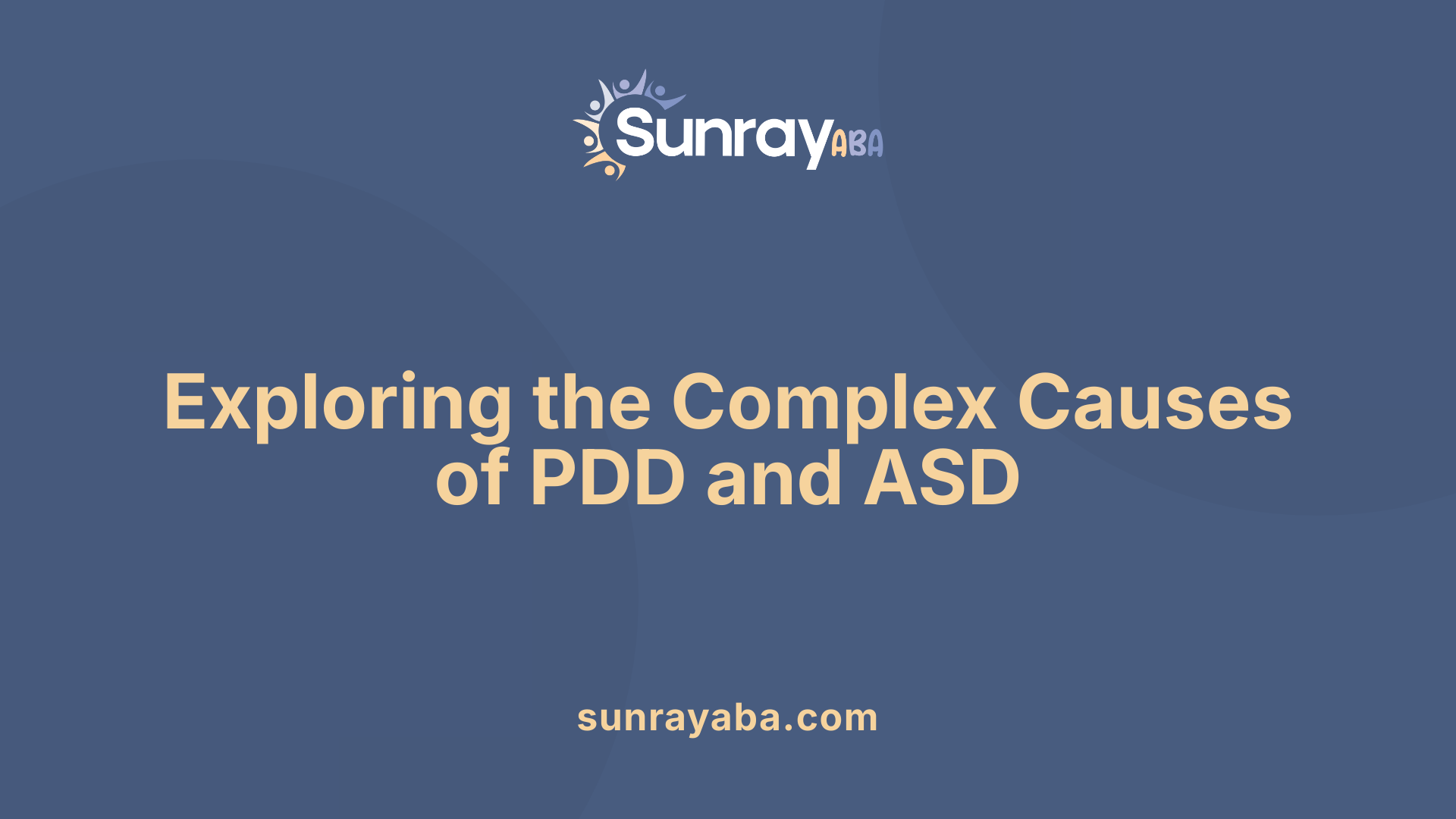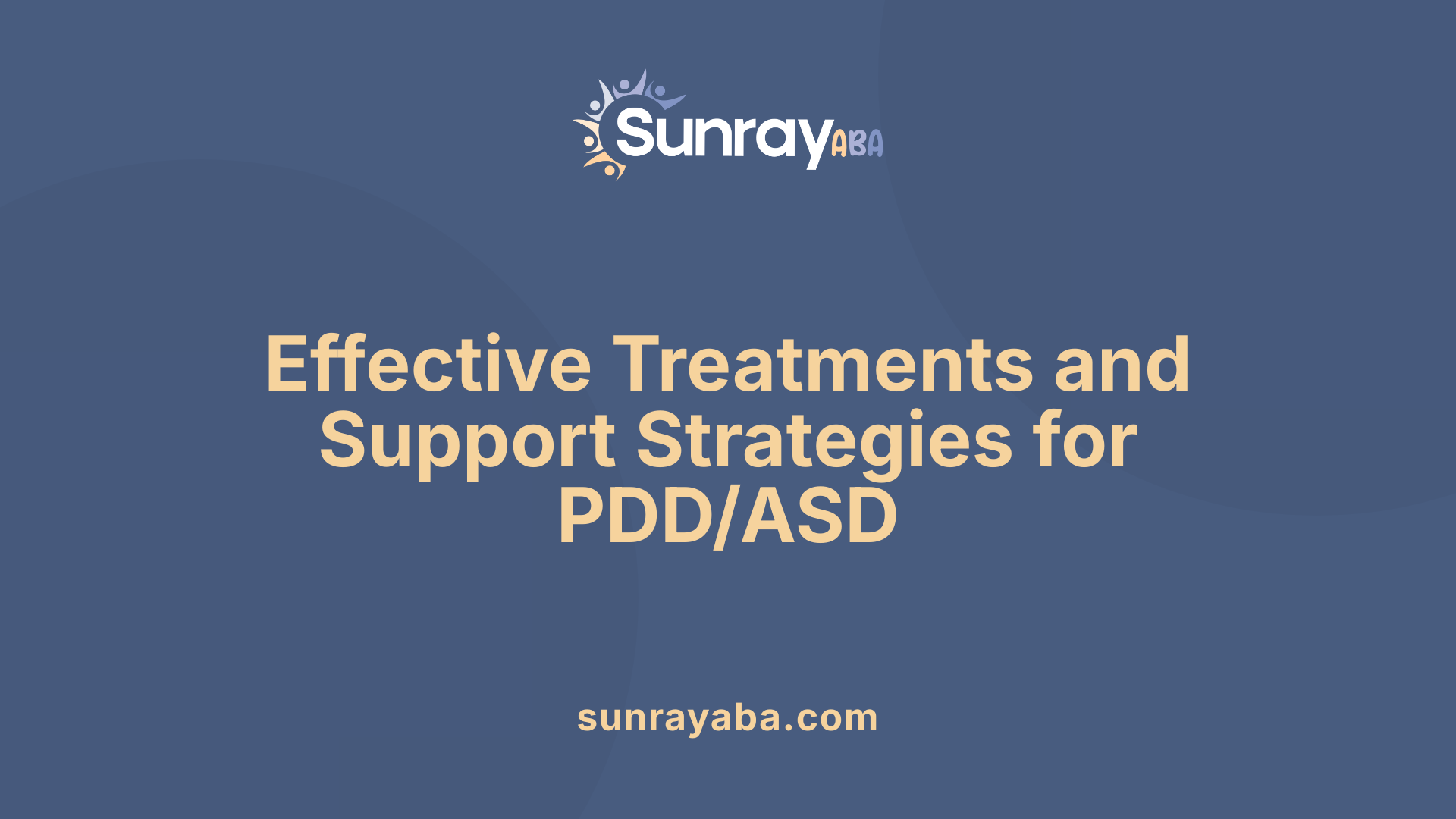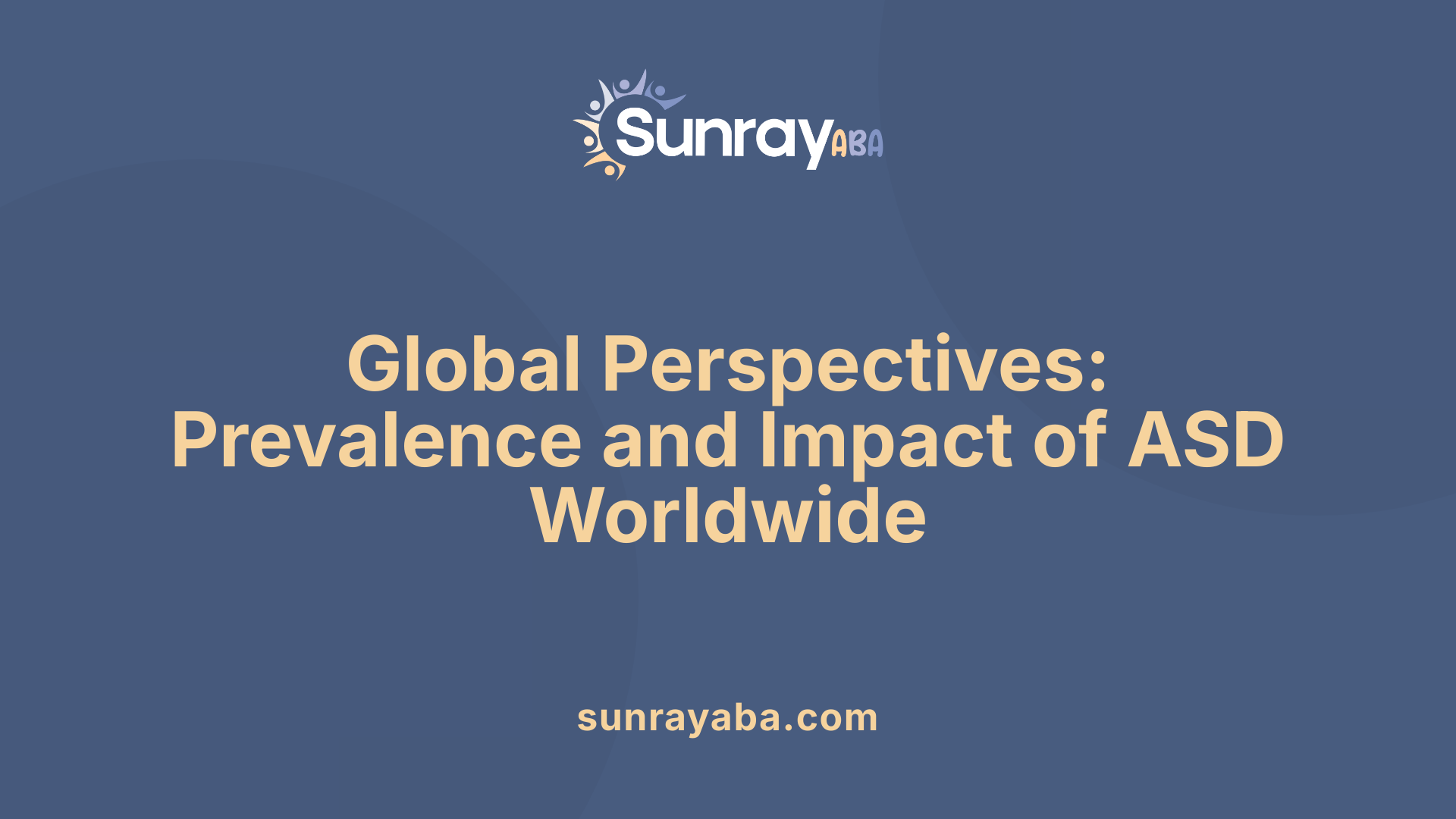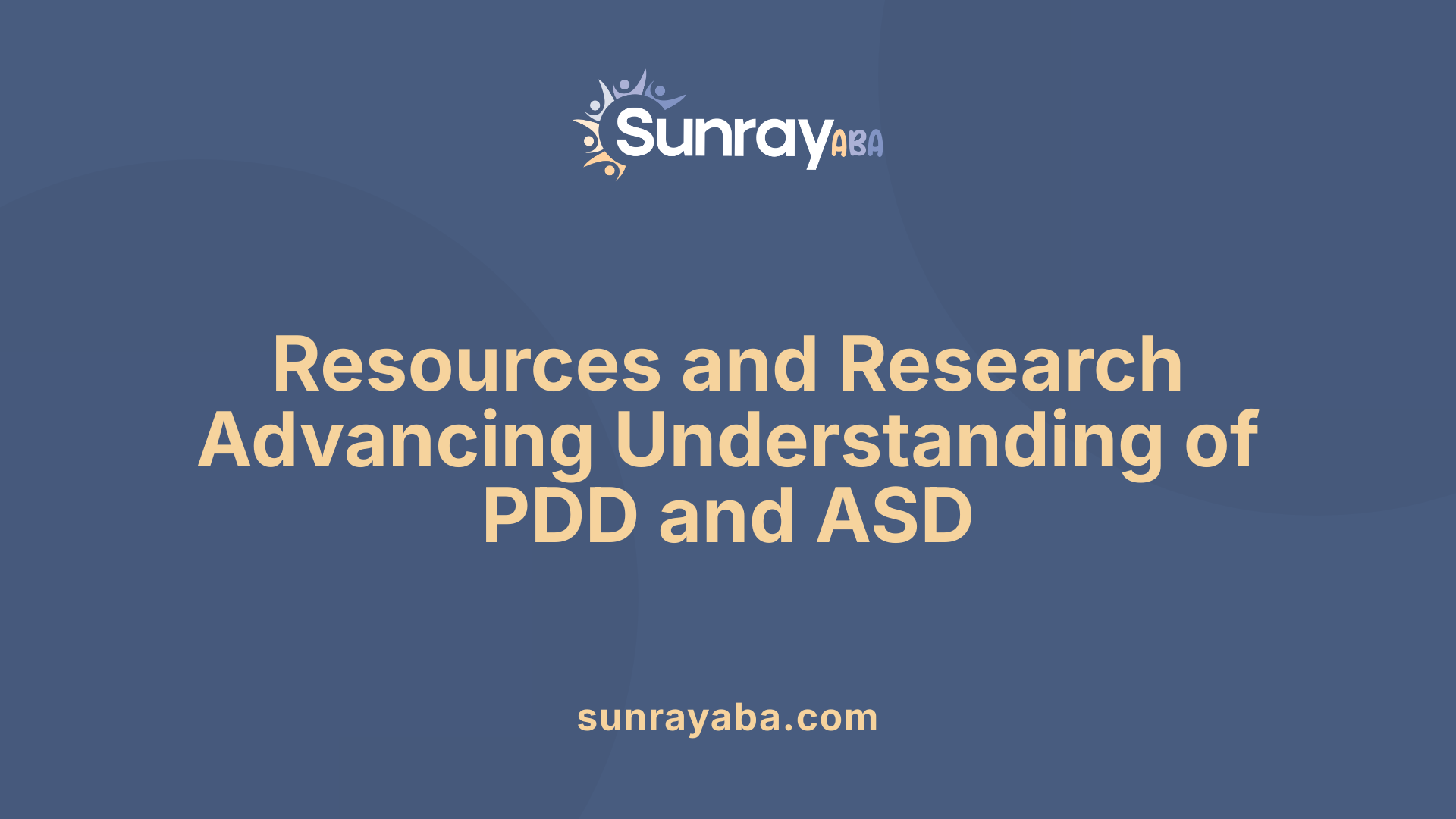What Is Pervasive Developmental Disorder

A Comprehensive Overview of Pervasive Developmental Disorder (PDD) and Its Evolving Classification
Pervasive Developmental Disorder (PDD) was historically used to describe a group of childhood disorders characterized by delays in social, communication, and behavioral skills. While the term has undergone significant reclassification, understanding its origins, symptoms, causes, and management approaches remains crucial for early detection and effective intervention. This article explores the nature of PDD, its subtypes, diagnostic criteria, and how it fits within the broader autism spectrum disorder (ASD), providing insights into current research and treatment modalities.
Definition and Historical Context of PDD

What is PDD?
Pervasive developmental disorder (PDD) was a term historically used to describe a group of childhood conditions that involve significant challenges in social interaction, communication, and repetitive behaviors. These disorders usually appear before age 3 and can affect a child's ability to interact, communicate effectively, and adapt to new situations. PDD was an umbrella term encompassing several specific diagnoses that shared these common features.
Historical use of the term
Before 2013, PDD was widely used by healthcare professionals to categorize several developmental disorders, including autistic disorder, Asperger’s syndrome, childhood disintegrative disorder, Rett syndrome, and PDD-NOS (not otherwise specified). These conditions were recognized based on behavioral patterns and developmental history, as there were no definitive biological tests.
Transition to ASD classification
In 2013, the American Psychiatric Association updated the Diagnostic and Statistical Manual of Mental Disorders (DSM-5), replacing the term PDD with autism spectrum disorder (ASD). This change aimed to unify and simplify the classification because these conditions share overlapping symptoms and characteristics. Under DSM-5, the various PDD subtypes like Asperger’s syndrome and PDD-NOS were integrated into a single spectrum, emphasizing the wide range of abilities and challenges individuals may experience.
This shift helps focus on a spectrum of disorders characterized by social communication difficulties and repetitive behaviors while recognizing the diversity of individual experiences. It also streamlines diagnosis and encourages more tailored intervention plans for those affected.
Symptoms and Characteristics of PDD
What are the symptoms and characteristics of PDD?
Pervasive developmental disorder (PDD), now encompassed under autism spectrum disorder (ASD) in the DSM-5, presents with a range of challenges affecting social skills, communication, and behavior. One of the hallmark features is difficulty engaging in typical eye contact, which often persists throughout childhood. Affected individuals frequently struggle to interpret social cues, such as body language and facial expressions, making social interaction formidable.
Communication difficulties are also prominent. Many children with PDD experience delays in speech development, may use stereotyped or repetitive language, and find it hard to keep conversations going. They may exhibit unusual vocal tones or volume and have trouble expressing their thoughts clearly. Difficulties in understanding and interpreting language can lead to frustration and behavioral issues.
Social interaction challenges are a core aspect, with children often preferring to play alone or in repetitive ways. They might not respond to their name, avoid getting close to peers, or show limited interest in sharing experiences. These difficulties start to become noticeable around age 3, although signs can be seen as early as infancy.
Repetitive behaviors and routines are common, such as hand-flapping, rocking, or twirling. These behaviors provide comfort and predictability for individuals with PDD. Many also develop strict routines and become distressed by changes, demonstrating a strong preference for sameness.
Sensory sensitivities are another key trait. Children may overreact or underreact to sensory stimuli like lights, sounds, textures, or smells. Unusual play behaviors, such as lining up toys or fixating on particular objects, are often observed.
The causes are believed to involve a mixture of genetic predispositions and environmental exposures, although specific genes and factors are still being studied. Importantly, early diagnosis and tailored behavioral therapies—such as speech therapy, occupational therapy, and behavioral interventions—can greatly improve communication skills, social functioning, and overall quality of life for individuals with ASD.
Subtypes and Classifications of PDD
What are the different types or subtypes of pervasive developmental disorders?
Pervasive Developmental Disorders (PDD) comprise several conditions characterized by early onset of developmental delays, especially in social skills and communication. Historically, these subtypes included autistic disorder, Asperger's syndrome, Rett's syndrome, childhood disintegrative disorder, and PDD-NOS (Pervasive Developmental Disorder-Not Otherwise Specified).
Autistic disorder, often referred to as classic autism, is marked by significant challenges in social interaction, communication, and repetitive or stereotyped behaviors. Symptoms typically surface by age 3 and can be severe, affecting a child's ability to function independently.
Asperger's syndrome presents a different profile. Individuals usually have normal or above-average intelligence and language development but struggle with social interactions and display restricted interests and repetitive behaviors. This subtype is often considered high-functioning and may go unnoticed until social demands become more apparent.
Rett's syndrome is primarily observed in females. It follows a period of normal development within the first 6 to 18 months, after which children experience regression in motor skills, communication, and cognitive abilities. Repetitive hand movements, such as hand-wringing, are characteristic.
Childhood disintegrative disorder, also known as Heller's syndrome, involves at least two years of typical development followed by a rapid and severe regression across multiple functions, including language, social skills, and motor abilities. It is a rare condition with profound effects.
PDD-NOS was a diagnosis used when children exhibited severe impairments in social interaction or communication but did not meet the strict criteria for other specific PDDs. It served as a broader, less specific category, encompassing children with atypical or subthreshold symptoms.
These subtypes reflect a spectrum of developmental challenges, varying in severity and presentation. Although DSM-5 has unified these under the umbrella term 'Autism Spectrum Disorder,' understanding the distinct features of each helps in designing appropriate interventions and support strategies.
Causes and Etiology of PDD

What causes pervasive developmental disorders?
The origins of pervasive developmental disorders (PDD), now categorized under autism spectrum disorder (ASD), are complex and multifaceted. Current research indicates that these conditions stem from an intricate combination of genetic and environmental influences.
Genetic factors play a significant role in the development of ASD. Specific gene mutations, variations, and inherited conditions such as fragile X syndrome and Down syndrome have been linked to increased risk. These genetic predispositions may affect brain development and neural connectivity, setting the stage for the behavioral and developmental features seen in ASD.
Environmental influences also contribute to the etiology of PDD. Factors like advanced maternal age at conception, complications during pregnancy, and prenatal exposure to certain medications have been associated with a higher likelihood of ASD. These environmental factors could impact fetal brain development or interact with genetic predispositions.
Biological mechanisms are believed to involve abnormalities in brain structure and function. Issues related to metabolism, immune system responses, and neurobiological development likely play roles. For example, atypical neural pathways and synaptic functioning may underlie many ASD symptoms.
Several risk factors increase the probability of developing PDD. Having a sibling with ASD, certain genetic syndromes like Rett syndrome, and being born prematurely or with low birth weight are associated with higher risk. Additionally, biological factors such as maternal exposure to environmental toxins and certain medical conditions may influence the likelihood.
While research has advanced our understanding, the exact cause of PDD remains unknown. It is generally accepted that no single factor causes ASD. Instead, multiple influences interact in complex ways, affecting brain development in vulnerable individuals.
Early diagnosis and intervention are crucial, as they can significantly improve outcomes. However, current evidence does not support a direct cause-and-effect relationship linking any particular environmental or genetic factor solely to ASD. Ongoing studies aim to better understand these interactions and identify potential preventive strategies.
Diagnostic Criteria and Evolution Over Time
How are pervasive developmental disorders diagnosed?
Pervasive developmental disorders (PDDs), now collectively classified under autism spectrum disorder (ASD) in the DSM-5 since 2013, are diagnosed through detailed behavioral assessments rather than laboratory tests. The process involves a thorough clinical evaluation by qualified healthcare professionals, such as child psychiatrists, psychologists, or developmental pediatricians.
To accurately diagnose ASD, clinicians observe behaviors, review developmental history, and utilize standardized assessment tools. Common instruments include the Autism Diagnostic Observation Schedule (ADOS) and the Autism Diagnostic Interview-Revised (ADI-R), which help identify core symptoms like challenges in communication, social interaction difficulties, and repetitive behaviors.
Since symptoms can vary significantly among individuals, the diagnosis considers severity, presentation, and the degree of impairment. It also involves ruling out other developmental or mental health conditions through differential diagnosis.
Early screening is vital and is recommended during routine pediatric visits at 18-24 months, focusing on developmental milestones like language use, social engagement, and adaptive skills. Preschool and school-aged children displaying delays or atypical behaviors should undergo comprehensive evaluations.
Assessment also includes gathering developmental history—such as ages at which language or social skills emerged or regressed—and collecting reports from parents, teachers, or caregivers.
Understanding the evolving landscape of diagnostic criteria, the DSM editions have changed how these disorders are classified. Initially, the DSM-IV included specific subtypes like autistic disorder, Asperger’s syndrome, childhood disintegrative disorder, and PDD-NOS. In 2013, the DSM-5 unified these under the umbrella of ASD, emphasizing a spectrum of severity and symptoms, streamlining diagnosis.
The shift from separate diagnoses to a spectrum reflects increased understanding that these conditions share overlapping features. Nevertheless, early diagnosis remains crucial; identifying symptoms promptly allows for the initiation of tailored interventions, improving developmental outcomes and quality of life.
Overall, diagnosis of PDD/ASD relies on careful behavioral evaluation, developmental history, and clinician judgment, with the goal of early detection to maximize support and improve functioning.
The Impact of DSM-5 Reclassification and Current Diagnostic Frameworks
Prior to 2013, the term Pervasive Developmental Disorder (PDD) was commonly used to describe a group of developmental conditions characterized by delays in social interaction, communication, and the presence of repetitive behaviors. These conditions included autistic disorder, Asperger’s syndrome, childhood disintegrative disorder, and PDD-NOS. Each subtype had specific diagnostic criteria, although they shared core features centered around social and communication difficulties.
With the publication of the DSM-5 in 2013, the American Psychiatric Association consolidated these various diagnoses into a single umbrella term called Autism Spectrum Disorder (ASD). This change aimed to streamline diagnosis, improve consistency, and better reflect the overlapping features of these conditions. Under the new framework, distinctions between disorders like Asperger’s syndrome and PDD-NOS were removed, and they are now classified under ASD based on severity and individual presentation.
The shift to a unified ASD diagnosis has significant implications. It simplifies the diagnostic process by focusing on the core deficits in social communication and restrictive, repetitive behaviors, regardless of traditional subtypes. This approach encourages the use of standardized screening tools and behavioral assessments to identify individuals on the autism spectrum early, which is crucial for intervention.
For treatment, this reclassification emphasizes individualized support strategies tailored to each person’s unique strengths and challenges. Therapies such as speech and behavioral interventions remain central, but clinicians now consider the spectrum’s broad range, from high-functioning individuals who may live independently to others with severe impairments requiring lifelong support.
In essence, the DSM-5’s redefinition has transformed how autism spectrum disorders are diagnosed and managed, promoting a more inclusive and flexible understanding of neurodevelopmental differences. The move also facilitates greater awareness and research aimed at understanding the full range of autism presentations.
For more detailed information on these changes, you can search for “DSM-5 changes and autism spectrum disorder.” This will provide comprehensive explanations of how diagnostic criteria have evolved and how the new framework impacts clinical practice and research.
Treatments, Interventions, and Support Strategies

What are the treatment and management options for PDD?
Managing pervasive developmental disorder (PDD), now recognized as autism spectrum disorder (ASD), involves a variety of approaches tailored to each individual’s needs. Early diagnosis and intervention play a vital role in improving long-term outcomes.
A cornerstone of treatment is behavioral therapy, particularly applied behavioral analysis (ABA). This therapy focuses on reinforcing positive behaviors and reducing harmful or disruptive behaviors. It helps individuals develop communication, social, and behavioral skills essential for daily life.
Speech therapy is also integral, assisting with language development, functional communication skills, and social interaction. Occupational therapy helps improve fine motor skills and sensory processing issues, enabling better handling of sensory stimuli and daily activities. Physical therapy may be recommended to improve gross motor skills, coordination, and strength.
Medications are prescribed mainly for managing co-occurring conditions such as anxiety, attention deficit hyperactivity disorder (ADHD), or irritability. Drugs like risperidone and aripiprazole are approved for controlling irritability associated with ASD. Other medications might include antidepressants or anti-anxiety drugs to address specific psychiatric concerns.
Complementary therapies can support overall well-being. Art, music, massage, yoga, and meditation are popular options that promote relaxation, sensory integration, and emotional expression. These therapies are often used alongside traditional treatments to foster a holistic approach to care.
Support strategies extend beyond therapy. Individualized educational plans and accommodations help learners with ASD maximize their strengths while addressing their challenges. Support groups and family counseling are also beneficial, providing emotional support and practical advice.
In conclusion, a multidisciplinary approach combining behavioral interventions, therapies, medications for associated issues, and supportive activities can significantly enhance quality of life and functional independence for individuals with PDD/ASD.
Prevalence, Epidemiological Data, and Global Impact

What is the prevalence or epidemiology of PDD?
The prevalence of autism spectrum disorder (formerly considered a part of pervasive developmental disorders) is now estimated to affect approximately 1 in 44 to 1 in 54 children in the United States, with some recent data suggesting about 1 in 31. These figures highlight a significant rise compared to past assessments, largely due to broader diagnostic criteria and increased awareness.
ASD impacts individuals across all racial, ethnic, and socioeconomic groups worldwide. It typically manifests in early childhood, often before age 3, influencing social skills, communication, and behavior. The severity varies from mild social difficulties to profound developmental challenges.
Early diagnosis and intervention are crucial for improving long-term outcomes. While exact causes are not fully understood, genetic and environmental factors are believed to play substantial roles. Overall, ASD is recognized globally as a neurodevelopmental disorder that requires supportive services and specialized educational strategies.
Educational Resources and Ongoing Research in PDD/ASD

What educational and research resources are available for understanding PDD?
Understanding pervasive developmental disorder (PDD), now integrated into autism spectrum disorder (ASD), involves access to numerous educational and research resources. These include professional training programs, online courses, and workshops that are designed to educate caregivers, educators, and healthcare professionals. Organizations such as the Autism Society and the Autism Research Institute offer valuable materials and certification programs.
Research initiatives in ASD focus heavily on uncovering genetic, environmental, and neurobiological influences. These studies are often published in reputable scientific journals, accessible via platforms like PubMed and Google Scholar. Researchers aim to better understand the causes of ASD, improve early detection methods, and develop more effective therapies.
Diagnostic tools like the Autism Diagnostic Observation Schedule (ADOS) and the Autism Diagnostic Interview-Revised (ADI-R) are critical for accurately assessing social and communication deficits. These assessments help clinicians confirm diagnoses and tailor interventions.
Supportive therapies are fundamental educational resources, including Applied Behavior Analysis (ABA), speech therapy, occupational therapy, and sensory integration approaches. These therapies equip individuals with skills to improve communication, social interaction, and daily functioning.
On a broader scale, national health agencies such as the Centers for Disease Control and Prevention (CDC) provide extensive informational resources, including guidelines for early screening, diagnosis, and intervention strategies. Support networks and advocacy groups also play a vital role in providing community-based resources and ongoing education.
Through continued research and educational efforts, the understanding of ASD enhances, leading to better diagnosis, support, and treatment options for individuals and families affected by these developmental disorders.
Empowering Through Knowledge and Support
Understanding Pervasive Developmental Disorder, especially within the context of its reclassification as autism spectrum disorder, is vital for early detection, intervention, and support. Recent advances in research and therapy underscore the importance of a multidisciplinary approach to improve quality of life for affected individuals. Continued educational efforts and scientific inquiry are essential to unraveling the complexities of these neurodevelopmental conditions and ensuring accessible, effective care for all individuals on the autism spectrum.
References
- Pervasive Developmental Disorder (PDD) - Cleveland Clinic
- Pervasive Developmental Disorder - Not Otherwise Specified (PDD ...
- Pervasive Developmental Disorders (PDD) - WebMD
- Autism Spectrum Disorder - National Institute of Mental Health (NIMH)
- Pervasive Developmental Disorder - an overview - ScienceDirect.com
- What is Pervasive Developmental Disorder? | 5 PDDs Explained
- Table 5, DSM-IV Pervasive Developmental Disorder Not Otherwise ...
- High-functioning pervasive developmental disorders in adults